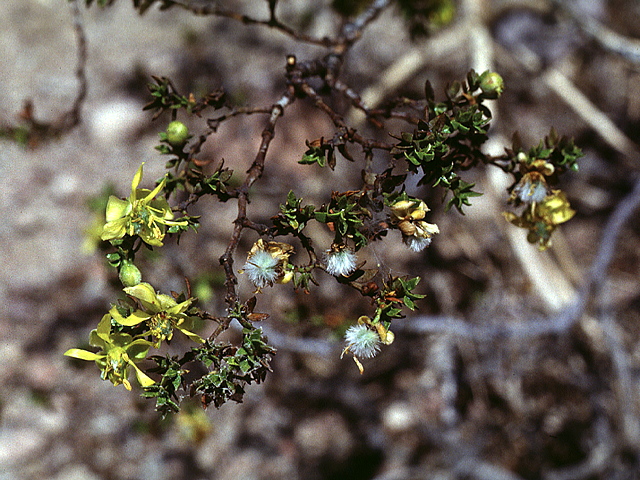Larrea tridentata
 Common: Creosote bush, Greasewood, Guamis
Common: Creosote bush, Greasewood, Guamis
Family: Zygophyliaceae
Origin: Native to deserts of southeastern California, Arizona, southern Utah, western Texas, northern Mexico. Usually grows on dry plains, mesas and slopes, between sea level and elevations of 5,000 feet.
Sunset Zone: 10-13, 19
Light: Full sun
Soil: Sandy and poor soil types
Water: Drought tolerant. Taller, denser growth with water
Personification of desert plant. Use as wind or privacy screen, or trim into formal hedge. Works well in revegetated or naturalistic desert landscapes. Straggly and open in shallow dry soil, attractive, dense, rounded but spreading where water accumulates. Irregular twisted branches, delicate foliage. Twisted gray stems rise from central base. Slow to moderate growth rate. Grows 6-10 ft. tall with many upright branches, 6-10 feet wide. Leathery, bright yellow-green to dark green leaves divided into two tiny 3/8-in. long crescents. Gummy secretion makes leaves look varnished and yields distinctive creosote odor, especially after rain. Small yellow flowers off and on all year, followed by small pearly white seed balls with dense covering of silver hairs.
Give it fertilizer along with irrigation water to produce shiny dark green leaves. Sometimes sold as L. divericata. May be difficult to obtain or slow to grow. One of the most common shrubs of the southwestern deserts. Small plants may be transplanted during rainy season if ground is soaked. Plant from containers at any time.